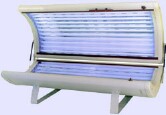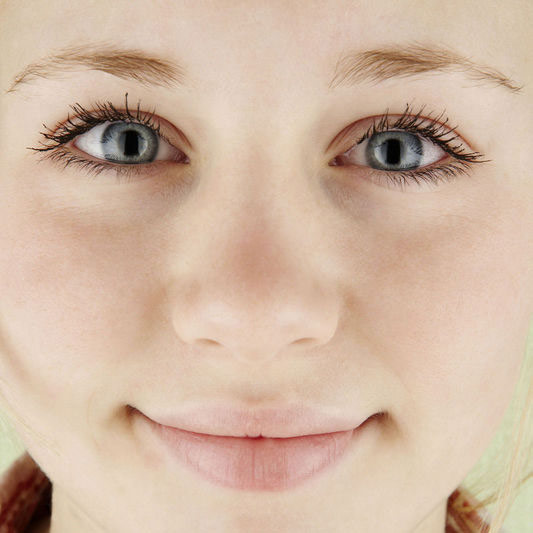
MONDAY, June 23, 2014 (HealthDay News) — Teens and young adults who engage in indoor tanning risk developing skin cancer at an early age, a new study finds.
Once thought safer than outdoor sunbathing, indoor tanning can produce 10 to 15 times as much ultraviolet (UV) radiation as the midday sun, the study authors noted.
“Our findings suggest that children and young adults who seek indoor tanning may be especially vulnerable to developing basal cell carcinoma, the most common form of skin cancer, at a young age,” said lead researcher Margaret Karagas, professor of biostatistics and epidemiology at Dartmouth Medical School in Lebanon, N.H.
The study looked at people aged 50 and younger who were diagnosed with basal cell skin cancer. While usually treatable, this type of skin cancer can be highly disfiguring if not caught early, and basal cell tumors have a high rate of recurrence. Until recently, basal cell skin cancer was considered a cancer of later life, the researchers said.
The investigators found that indoor tanning was associated with developing skin cancer at an early age. Moreover, the strongest link was seen among those whose first exposure to indoor tanning occurred when they were teens or young adults.
These results support the recommendation of the American Academy of Pediatrics to minimize ultraviolet exposure, the researchers said.
Teens often have easy access to tanning facilities, and only a few states ban indoor tanning for minors, Karagas said.
“In the absence of laws protecting children from these exposures, our findings suggest counseling on the risks of indoor tanning and discouraging parents from consenting to this behavior,” Karagas said.
The report is published online June 23 and in the July print issue of Pediatrics.
In May, the U.S. Food and Drug Administration announced that tanning beds and tanning booths must carry a visible warning stating that the devices should not be used by anyone under age 18.
“There’s mounting evidence showing that indoor tanning in childhood and early adult life further increases risk of melanoma later in life due to greater lifetime exposure,” Nancy Stade, deputy director for policy at the FDA’s Center for Devices and Radiological Health, said in a press conference announcing the order. Melanoma is the deadliest form of skin cancer.
However, the order does not ban teen use of tanning beds outright. “It reflects a very strong statement by the FDA that they should not be used by individuals under age 18,” Stade said.
Dr. Jeffrey Salomon, an assistant clinical professor of plastic surgery at Yale University School of Medicine, said the new study makes two key points: First, it supports the concept that the younger a person is when exposed to a known carcinogen — in this case, UV A and B — the greater the risk of eventually developing a cancer. Second, “the study reveals that the cancer also occurs at a decidedly earlier age,” he said.
“And your skin looks older to boot,” he added.
Newer tanning devices are as risky as older machines in terms of emitting known cancer-causing light, Salomon said.
For the study, Karagas and colleagues collected data on indoor tanning among 657 people with basal cell skin cancer and 452 without skin cancer, who took part in the New Hampshire Skin Cancer Study.
Data was also collected on indoor tanning and the type of device used — sunlamps, tanning beds or tanning booths — and on time spent outdoors in childhood.
In about 40 percent of cases, basal cell skin cancer was found on the back or chest rather than the head and neck. Tumors on the back and chest are associated with indoor tanning, rather than with natural sunlight, the study authors pointed out.
The link between indoor tanning and cancer was seen for all types of indoor tanning devices, including sunlamps, tanning beds and tanning booths, the study found.
More information
For more on skin cancer, visit the American Cancer Society.
Copyright © 2026 HealthDay. All rights reserved.

